Do you have a question about the Yamaha MT-10 2023 and is the answer not in the manual?
Owner's responsibility for safe operation and rider requirements.
Tips for visibility, intersections, blind spots, and operator experience.
Importance of helmets, jackets, gloves, boots for injury prevention.
Dangers of carbon monoxide from exhaust and necessary precautions.
How cargo affects stability and handling, and maximum load limit.
Risks of aftermarket parts and modifications impacting vehicle safety.
Identification of components located on the left side of the motorcycle.
Identification of components located on the right side of the motorcycle.
Identification and location of primary controls and instrument panel.
Integrated system for enhanced riding experience using sensors and adjustments.
Selectable modes affecting throttle response and engine power delivery.
System to maintain rear-wheel traction during acceleration by managing engine power.
System regulating engine power for sideward slides.
System reducing torque during deceleration.
Allows clutch-less shifting using electronic assistance.
System reducing front wheel lift during acceleration.
System regulating hydraulic brake pressure.
System to maintain a set cruising speed without manual throttle control.
System that limits vehicle speed to a rider-set maximum.
Controls ignition, lighting, and steering lock functions.
Operation of switches on left and right handlebars for various functions.
Meanings of dashboard indicator and warning lights for vehicle status.
Overview of STREET and TRACK modes, speedometer, tachometer.
Verifying fuel level, lines, and hoses before operation.
Checking brake operation, pads, fluid level, and hydraulic system.
Checking tire condition, tread depth, and air pressure.
Guidelines for the first 1600 km to ensure proper engine wear.
Procedure for starting the engine safely using ignition cut-off system.
How to shift gears, including quick shifter use and neutral.
Procedures for slowing down, downshifting, and parking safely.
Schedules for emission control system checks and general maintenance.
Checking engine oil level and procedure for changing oil and filter.
Tire condition, pressure checks, and valve clearance.
Checking brake fluid levels and changing brake fluid.
Checking and adjusting drive chain slack and lubrication.
Procedure for checking spark plug condition and gap.
Step-by-step guide for washing the motorcycle safely.
Procedures for preparing and storing the vehicle for extended periods.
Location of VIN, engine serial number, and model label.
Details of the limited warranty and customer responsibilities.
Information about extended warranty plans for owner protection.
How to report vehicle safety defects to NHTSA and Yamaha.
Owner's responsibility for safe operation and rider requirements.
Tips for visibility, intersections, blind spots, and operator experience.
Importance of helmets, jackets, gloves, boots for injury prevention.
Dangers of carbon monoxide from exhaust and necessary precautions.
How cargo affects stability and handling, and maximum load limit.
Risks of aftermarket parts and modifications impacting vehicle safety.
Identification of components located on the left side of the motorcycle.
Identification of components located on the right side of the motorcycle.
Identification and location of primary controls and instrument panel.
Integrated system for enhanced riding experience using sensors and adjustments.
Selectable modes affecting throttle response and engine power delivery.
System to maintain rear-wheel traction during acceleration by managing engine power.
System regulating engine power for sideward slides.
System reducing torque during deceleration.
Allows clutch-less shifting using electronic assistance.
System reducing front wheel lift during acceleration.
System regulating hydraulic brake pressure.
System to maintain a set cruising speed without manual throttle control.
System that limits vehicle speed to a rider-set maximum.
Controls ignition, lighting, and steering lock functions.
Operation of switches on left and right handlebars for various functions.
Meanings of dashboard indicator and warning lights for vehicle status.
Overview of STREET and TRACK modes, speedometer, tachometer.
Verifying fuel level, lines, and hoses before operation.
Checking brake operation, pads, fluid level, and hydraulic system.
Checking tire condition, tread depth, and air pressure.
Guidelines for the first 1600 km to ensure proper engine wear.
Procedure for starting the engine safely using ignition cut-off system.
How to shift gears, including quick shifter use and neutral.
Procedures for slowing down, downshifting, and parking safely.
Schedules for emission control system checks and general maintenance.
Checking engine oil level and procedure for changing oil and filter.
Tire condition, pressure checks, and valve clearance.
Checking brake fluid levels and changing brake fluid.
Checking and adjusting drive chain slack and lubrication.
Procedure for checking spark plug condition and gap.
Step-by-step guide for washing the motorcycle safely.
Procedures for preparing and storing the vehicle for extended periods.
Location of VIN, engine serial number, and model label.
Details of the limited warranty and customer responsibilities.
Information about extended warranty plans for owner protection.
How to report vehicle safety defects to NHTSA and Yamaha.
| Engine Type | Liquid-cooled, 4-stroke, DOHC, 4-valve |
|---|---|
| Displacement | 998cc |
| Bore x Stroke | 79.0 mm x 50.9 mm |
| Compression Ratio | 12.0:1 |
| Fuel System | Fuel Injection |
| Transmission | 6-speed |
| Final Drive | Chain |
| Front Tire | 120/70 ZR17M/C (58W) |
| Rear Tire | 190/55 ZR17M/C (75W) |
| Length | 2, 095 mm |
| Width | 800 mm |
| Seat Height | 835 mm |
| Wheelbase | 1, 405 mm |
| Ground Clearance | 135 mm |
| Wet Weight | 212 kg |
| Fuel Capacity | 17 liters |
| Maximum Power | 122.0 kW (165.9PS) @ 11, 500 rpm |
| Maximum Torque | 112 Nm @ 9, 000 rpm |
| Front Brake | Dual disc, 320 mm |
| Rear Brake | 220mm hydraulic disc |
| Front Suspension | 43mm inverted fork, fully adjustable |
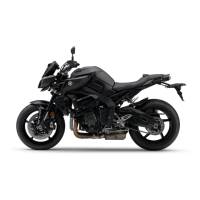
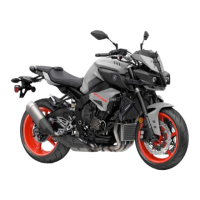
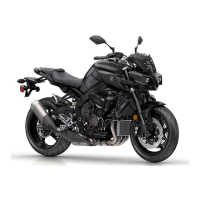

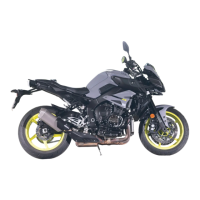
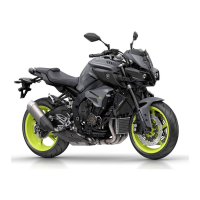


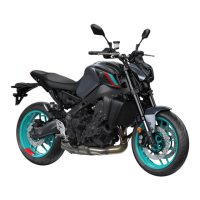

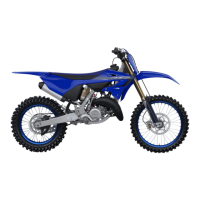

